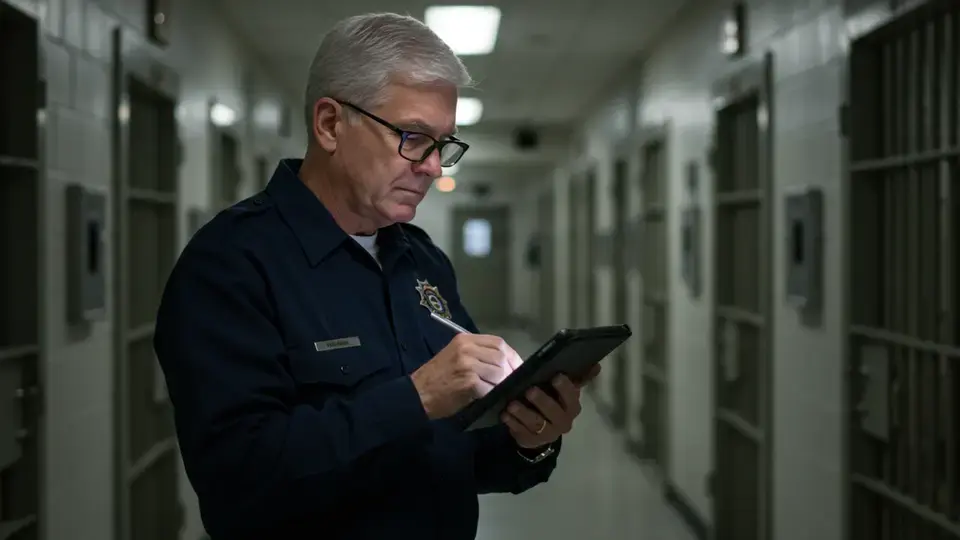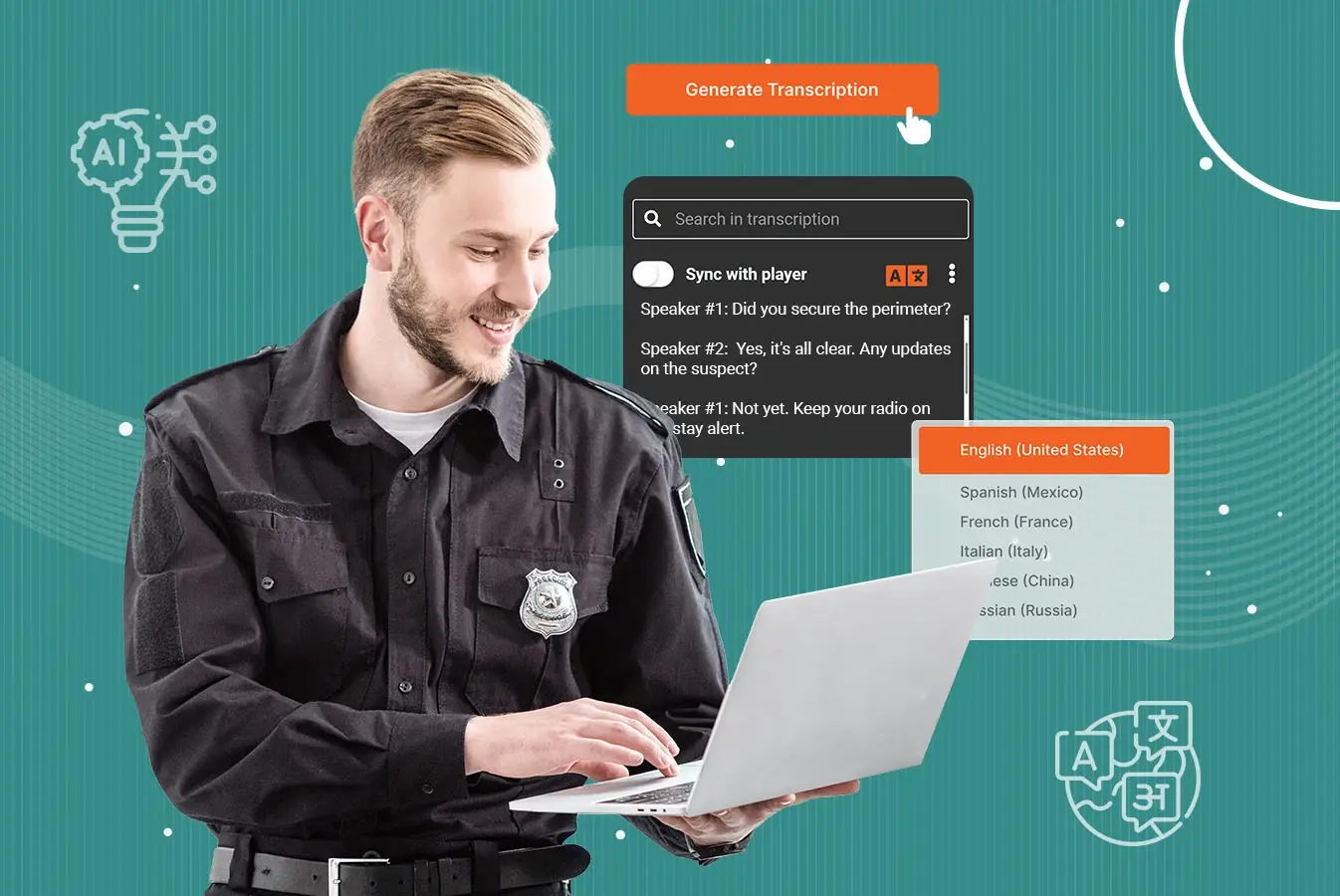How Auto Transcription Benefits 911 Call Centers for Emergencies
by Asim Haleem, Last updated: July 8, 2025, Code:
%20(1).webp)
This blog discusses the importance of auto transcription in improving accuracy, supporting legal compliance, and enhancing dispatcher training. It highlights how AI-driven transcription for 911 call centers helps address key challenges in emergency response, ensuring better efficiency and public safety.
Consider that you oversee a busy customer service center where quick responses and clear communication are essential. Even the smallest mistake or missed detail can affect customer satisfaction and damage the company’s reputation. For managers and staff, the key question is: How can we make sure every important conversation is accurately recorded, saved, and easy to access later?
The answer lies in transcription. As Erica Schneider’s “Poke at Pain” principle emphasizes, this blog dives into the pain points faced by public safety professionals, highlighting the necessity of auto transcription as an essential part of emergency response infrastructure. For anyone involved in emergency response, call transcription is not just helpful; it's vital for compliance, training, legal defense, and operational efficiency. AI legal transcription plays a key role in ensuring that 911 calls and other emergency communications are both accurate and compliant with legal standards.
In this blog, we’ll explore the pressing challenges faced by those in the field and why transcription is indispensable for solving them. Let’s start by examining the problem in detail.
Information Gaps in 911 Call Documentation
911 operators, dispatchers, and responders handle extreme situations where every word could mean the difference between life and death. They’re responsible for capturing vital information in high-pressure scenarios, where the risks of miscommunication or missed details are serious and can have far-reaching consequences.
The following are some of the most pressing challenges emergency service professionals face when 911 call information is incomplete or inaccessible:
- Risk of Liability: Misunderstandings, omissions, or delays can lead to lawsuits. Legal challenges not only drain resources but also risk damaging public trust in the agency.
- Quality Control and Training Hurdles: Without an accurate record of calls, evaluating dispatcher performance or identifying training needs becomes difficult. Transcripts provide a clear picture of what went well or what could be improved.
- Regulatory Compliance Issues: Freedom of Information Act (FOIA) requests, Criminal Justice Information Services (CJIS) standards, and eDiscovery protocols all demand transparent and accessible records. Audio recordings alone aren’t sufficient for these regulatory standards.
For agencies juggling these concerns, auto transcription is a straightforward and effective solution. However, without it, these risks and challenges are amplified. And while audio recordings are standard in emergency services, they lack the searchable, accessible, and actionable quality that written transcripts provide. AI-driven transcription for 911 call centers ensures that the transcription process is both quick and accurate, making it easier to meet these challenges.
The High Stakes of Missing Information
When it comes to 911 call documentation, the stakes are high. Imagine a call center manager trying to review the quality of a dispatcher’s response to an emergency call but only having an audio recording. Audio alone lacks the depth of data needed to analyze and improve dispatcher performance. Without a precise, accessible record of the call, call center managers miss opportunities for quality assurance and training improvements.
Similarly, for compliance officers, the stakes are legal and financial. Suppose a public records request or legal investigation challenges the handling of a 911 call. Without accurate and detailed documentation, the agency may find itself vulnerable to lawsuits or other liabilities. In this case, agencies are left scrambling to explain why details are missing or misinterpreted, and the consequences can be severe.
In some cases, missing information can even lead to tragedies. An unclear or missing detail in a 911 call can escalate situations, jeopardizing responder safety and potentially leading to fatal outcomes. When lives are on the line, accuracy is non-negotiable.
How 911 Call Transcription Benefits Emergency Services
To address these problems, agencies need a reliable way to capture every detail of a 911 call. Here’s how auto transcription provides a robust solution to the problems outlined above:
- Improved Accuracy and Accessibility of Information
Auto transcription provides a precise, searchable written record of calls, making it easy to retrieve key information quickly. This helps emergency teams make faster decisions and improve coordination. - Enhanced Compliance with Legal and Regulatory Standards
AI legal transcription ensures a clear, permanent record that meets regulatory requirements like CJIS, FOIA, and eDiscovery. It helps agencies stay compliant and avoid penalties related to record-keeping. - Supports Training and Quality Assurance for Dispatch Centers
Auto transcription helps 911 managers evaluate dispatcher performance, identify training needs, and refine protocols. It makes training more targeted and effective for better emergency response handling. - Streamlined Investigations and Legal Proceedings
Transcripts provide an accurate, unalterable record of 911 calls, serving as crucial evidence in investigations and legal cases. They help support officers’ statements and ensure clarity in court. - Faster Claim Processing and Validation for Insurance Adjusters
911 call transcripts offer a reliable record for insurance adjusters, helping to verify claims quickly and accurately. This speeds up the claims process and reduces the risk of disputes.
Breaking Down the Transcription Process for Emergency Services
For emergency services, transcription requires precision, speed, and a high degree of accuracy. Implementing a streamlined transcription process ensures that records are reliable and accessible when needed. Here’s an in-depth look at each step in the transcription process for emergency calls:
- Call Recording and Segmentation: All incoming 911 calls are recorded and segmented based on priority, caller information, and timestamps. This segmentation organizes information, making it easier to reference specific details later.
- Automated Transcription with AI-Powered Technology: Leading transcription providers use AI-driven speech recognition software to generate an initial text transcript. This automated transcription is valuable for creating a rapid, baseline version of the transcript, capturing most of the call’s details.
- Human Review and Quality Control: While AI-driven transcription is fast, human transcription specialists are essential for quality control. These specialists listen to the audio and refine the text, correcting any errors to ensure verbatim accuracy. This step is critical for complex calls with background noise, diverse accents, or distress.
- Secure Integration with Record Management Systems (RMS): After completion, transcriptions are securely stored and integrated with Record Management Systems (RMS). This integration ensures that transcripts are fully searchable, easy to retrieve, and can be accessed by authorized personnel for future reference.
Each of these steps ensures that transcripts are not only accurate but also stored securely and available whenever needed.
How to Get Started with 911 Call Transcription
Integrating auto transcription into emergency response workflows might seem challenging, but following these best practices can help you start smoothly. Here’s a closer look at the steps and tools that can make transcription an effective and seamless part of your agency’s operations:
- Choose High-Quality Transcription Software: Start by selecting transcription software that offers high accuracy rates, ideally supported by AI technology. Look for providers with robust security features, as they need to meet industry standards for data protection in public safety. Additionally, ensure the software can handle complex audio challenges like background noise or varying speech patterns often present in emergency calls.
- Leverage a Digital Evidence Management System (DEMS): A Digital Evidence Management System (DEMS) can be a game-changer for transcription management. With DEMS, emergency response agencies can automate, store, organize, and securely manage transcriptions alongside other digital evidence (e.g., body cam footage, surveillance videos, and call recordings). Here’s how a DEMS can enhance transcription management.
Is 911 Call Transcription Worth the Investment?
For some, the cost of transcription may seem high, especially when considering the investment in software and human reviewers. But when you factor in the risks of not having accurate documentation, such as potential lawsuits, regulatory penalties, and operational inefficiencies, as the return on investment becomes clear.
Transcription’s benefits are tangible and measurable: improved operational efficiency, reduced compliance risk, enhanced legal support, and improved training. Agencies that integrate AI-driven transcription for 911 call centers into their workflows not only protect themselves legally but also improve service quality and public trust.
People Also Ask
What is auto transcription and how does it benefit 911 call centers?
Auto transcription converts audio calls into written text, improving efficiency by making calls searchable and accessible, which enhances decision-making and legal compliance in 911 call centers.
How does AI-driven transcription improve 911 call documentation?
AI-driven transcription quickly and accurately converts 911 calls into text, making important information easy to retrieve and speeding up the response process.
Can auto transcription be used for legal purposes in emergency services?
Yes, auto transcription provides an accurate, unalterable written record that is admissible in court, helping support investigations and reducing legal risks.
How does AI legal transcription improve compliance for 911 agencies?
AI legal transcription ensures that 911 calls are accurately transcribed and easily searchable, helping agencies meet regulatory compliance like FOIA and CJIS requirements.
Why is auto transcription important for training 911 dispatchers?
Auto transcription allows managers to review calls, assess dispatcher performance, and improve training by identifying areas for improvement.
What are the challenges of auto transcription for 911 call centers?
Challenges include background noise and accents, but AI-driven transcription combined with human review ensures accurate and complete transcripts.
How does AI-driven transcription improve the speed of 911 call response?
AI-driven transcription quickly converts calls to text, allowing dispatchers to access critical information faster, leading to quicker response times.
Can auto transcription help with insurance claim processing?
Yes, auto transcription provides a reliable record of 911 calls, helping insurance adjusters verify claims and speed up processing.
How do 911 agencies integrate auto transcription into their workflow?
911 agencies use AI-driven transcription software to automatically transcribe calls, which are then stored in record management systems for easy access and compliance.
What are the benefits of AI-driven transcription over manual transcription?
AI-driven transcription is faster, more cost-effective, and consistently accurate, reducing time and labor compared to manual transcription.
Jump to
You May Also Like
These Related Stories

Streamlining Investigations with Correctional Facility Technology

How AI Transcriptions Boost Digital Evidence Management


No Comments Yet
Let us know what you think